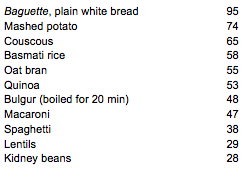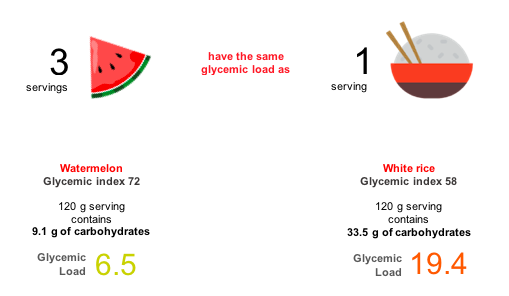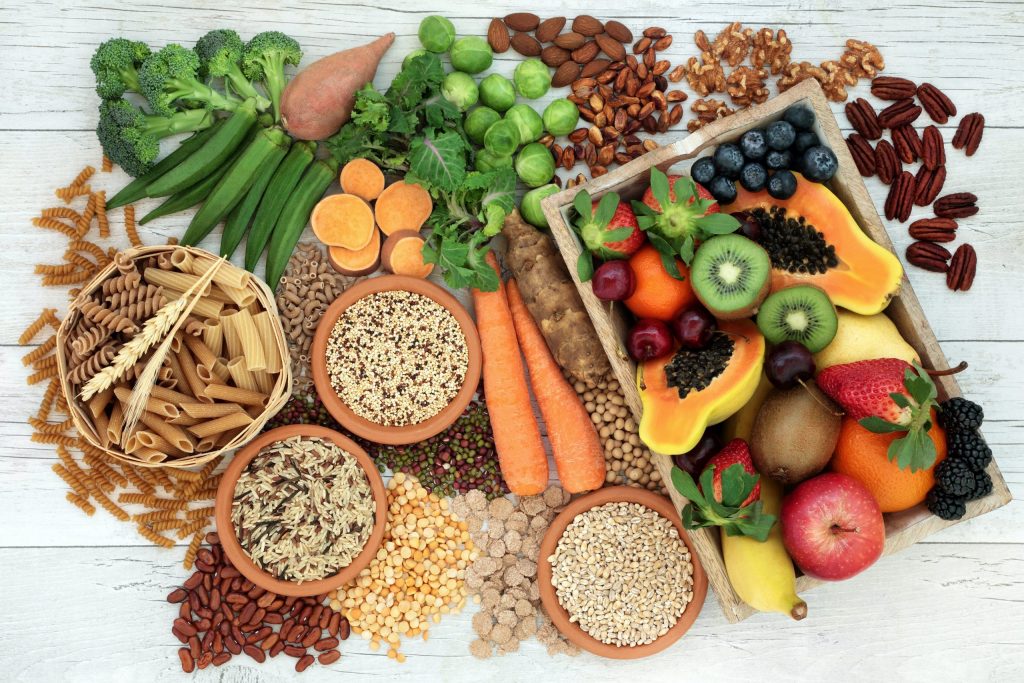Carbohydrates such as bread, pasta, potato, rice and legumes, form the very basis of our diet and are essential energy sources, but are they all created equal? The terms Simple sugars and complex carbohydrates have been used for years to classify carbohydrates according to their molecular structure. It was believed that simple sugars were rapidly absorbed and conversely, complex carbohydrates (e.g. starch) were digested more slowly and gradually released glucose into the bloodstream. However, the discovery of the glycemic index has truly transformed the nutrition landscape. It became very clear that some complex carbohydrates can be digested and absorbed almost as quickly as glucose, which is a simple sugar!
What is the glycemic index?
The glycemic index (GI) is a relative ranking of carbohydrate-containing foods based on their ability to raise blood glucose levels on a scale of 0 to100. The reference food (usually glucose, but sometimes white bread) has a GI of 100, while foods with little or no carbohydrates have a GI value of 0. A balanced diet based on low-GI foods is not only beneficial to people with diabetes, but also to those having high cholesterol levels or obesity.

Usually high-carbohydrate foods have a moderate to high GI. Below are some examples of staple foods:

Please note that the GI of a food is not a fixed value, rather it varies based on several factors like species, level of processing and cooking method.
And what about glycemic load?
The glycemic load (GL) is an extension of the GI and gives a more accurate picture of a food’s real-life impact on blood glucose levels as it takes into account the carbohydrate content in an actual serving.


For example, watermelon has a glycemic index of 72 (high) while its glycemic load for a normal serving is 6.5 (low) as it contains little amount of carbohydrates. The glycemic load gives us a broader picture of the hyperglycemic potential of foods, than does the glycemic index.

Tips
- Legumes (lentils, kidney beans, etc.) naturally have a low GI value. Try to combine them with cereals (rice, quinoa, couscous, etc.) as they help to bring down the overall GI of the meal. It’s also the perfect pairing to get complete proteins!
- Fruits usually have a moderate GI, but when combined with a dairy product (e.g. yoghurt or cottage cheese), the dairy proteins help to reduce the peak in glycemia. They are a perfect match for snacks!
- Cooking your pasta al dente ensures that the GI value is kept at its lowest.
- Some foods (e.g. chips, nuts) have a low GI value, but they are caloric. Eat in moderate amounts!
- Eat whole fruits instead of fruit juices as the presence of fibres helps to delay the digestion and absorption of sugars.
- Does GI appear rather complex to you? Start by making gradual changes in your eating habits while taking into account the main GI concepts and try to memorise the GI values of common foods.
You can also find the GI of more than 1000 foods on the online database of the University of Sydney for free!




